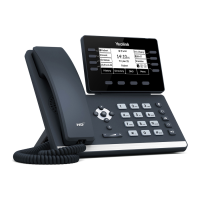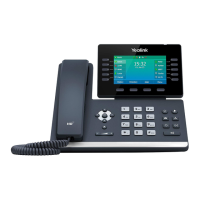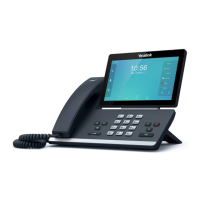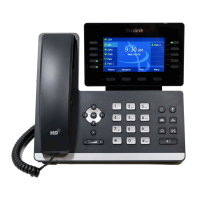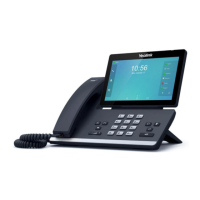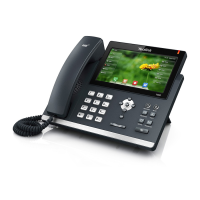Configuring Basic Features
147
Provisioning Guide_V81
.
To set up the provisioning server:
1. Install a provisioning server application or locate a suitable existing server.
2. Create an account and home directory.
3. Set security permissions for the account.
4. Create boot files and then edit them as desired.
5. Create configuration files and then edit them as desired.
6. Copy the boot files, configuration files and resource files to the provisioning server.
For more information on how to deploy IP phones using boot files and configuration files, refer
to Deploying Phones from the Provisioning Server on page 147.
Note
Deploying Phones from the Provisioning Server
During auto provisioning, IP phones download the boot file first, and then download the
configuration files referenced in the boot file in sequence. The parameters in the new
downloaded configuration files will override the duplicate parameters in files downloaded
earlier. For more information on boot files and configuration files, refer to Boot Files on page
136 and Configuration Files on page 138.
The boot files can only be used by the IP phones running firmware version 81 or later. The
configuration files, supplied with each firmware release, must be used with that release.
Otherwise, configurations may not take effect, and the IP phone will behave without exception.
Before you configure parameters in the configuration files, Yealink recommends that you create
new configuration files containing only those parameters that require changes.
To deploy IP phones from the provisioning server:
1. Create per-phone boot files by performing the following steps:
a) Obtain a list of phone MAC addresses (the bar code label on the back of the IP
phone or on the outside of the box).
b) Create per-phone <MAC>.boot files by using the template boot file.
c) Specify the configuration files paths in the file as desired.
2. Edit the common boot file by performing the following step:
a) Specify the configuration files paths in the file as desired.
3. Create per-phone configuration files by performing the following steps:
a) Create per-phone <MAC>.cfg files by using the MAC-Oriented CFG file from the
distribution as templates.
b) Edit the parameters in the file as desired.

